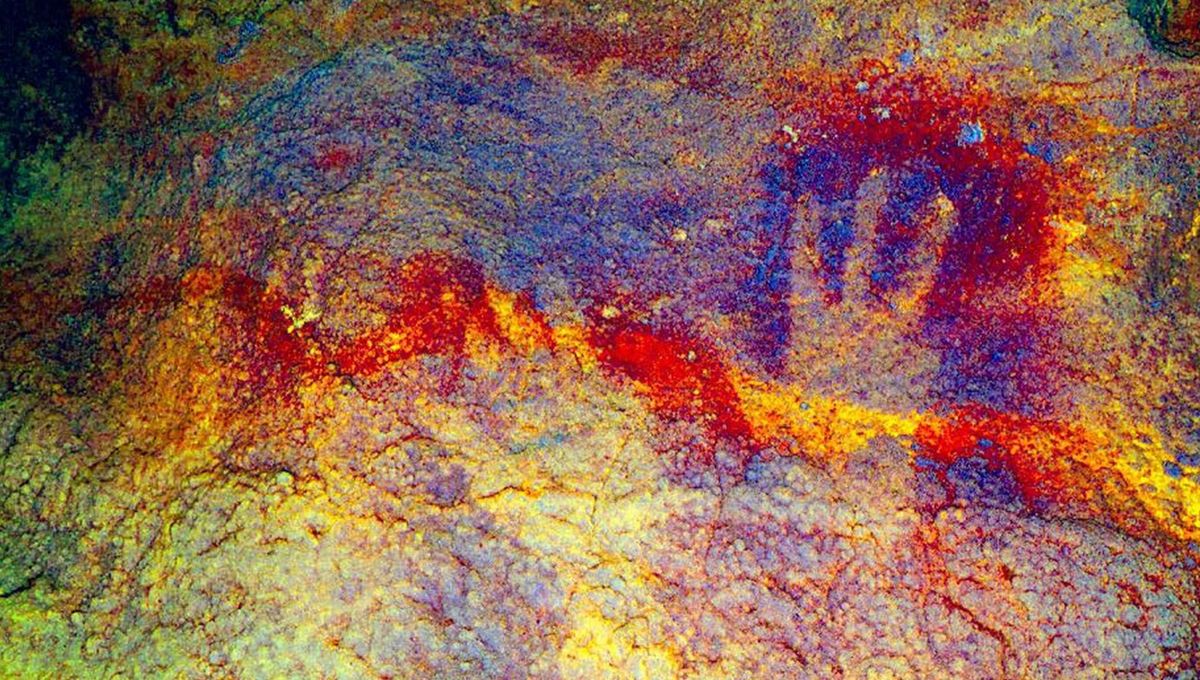
Kids have always loved fingerpainting, and you could probably count on one hand the number of preschoolers who don’t enjoy slapping their colorful palm prints onto paper – or better yet, walls. Amazingly, new research suggests that this universal artistic craze pre-dates our own species, with evidence pointing the finger at Neanderthals as the instigators of the messy fun.
Hand stencils – produced by throwing or blowing pigment at hands placed against a wall – are among the most iconic forms of prehistoric rock art. Found in caves across Europe and Asia, these ancient prints are the subject of much debate, with disagreements over the age of certain sites making it difficult to discern who made them.
Among the most significant collections of archaic hand stencils is that found in Maltravieso cave in western Spain. Produced using naturally present earth pigments such as manganese oxide, hematite, magnetite, and goethite, the artworks are not suitable for radiocarbon dating, which means that until now, scientists have had no way of telling how old they are.
However, in the past decade or so, the development of non-destructive uranium-thorium dating techniques has finally enabled researchers to uncover the secrets of these playful relics. Using these modern methods, the authors of the new study were able to determine the minimum ages of 22 samples of carbonate crusts found on hand stencils at Maltravieso.
So while the results don’t tell us exactly when the artworks were made, they do indicate their age by revealing the latest point at which they could have been created. And while some of the handprints were found to be at least 6,000 years old, others were produced upwards of 66,700 years ago.
Placing these results in context, the study authors explain that “given that there is no convincing evidence for modern humans in Iberia prior to 40 or 45 [thousand years] ago… it follows that at least some of the Maltravieso hand stencils were created by human groups in Europe long before modern humans.” And with Neanderthals known to have been present in the region from about 180,000 to 37,000 years ago, the species emerges as the most likely artist.
Whether or not modern humans then copied their extinct relatives by adding their own hand stencils to the collection is unclear, since we only know that some examples were made at least six millennia ago. It’s perfectly possible, therefore, that these prints also appeared before our species first reached Iberia.
“Either way, the data presented here suggest that hand stencils were a Neandertal innovation,” remark the study authors.
As for the purpose of the ancient hand prints, the researchers point out that they were unlikely to have been made simply for show, as they are found on surfaces “deep within the cave, in chambers far away from the natural light.” The artworks may therefore have had some sort of “ritual or cultic” function, although this is something we’re unlikely to ever know for sure.
The study is published in the Journal of Archaeological Science: Reports.
Source Link: Iconic Prehistoric Hand Print Craze Was Likely A Neanderthal Invention